Asparagus Profile
Written by Joy
Nov 04 2020

Asparagus is the seedling of asparagus asparagus, a perennial herb in the Asparagaceae family.
Asparagus morphological characteristicsAsparagus rootAsparagus stemAsparagus leavesAsparagus growth habit and growing environment and distributionTemperatureSoilMoistureAsparagus efficacy and roleAsparagus cultivation1. Ramming propagation2. Seed propagation3. Live cultivation
White bamboo shoots that have not been unearthed are called white bamboo shoots, and green bamboo shoots are green after unearthed. Even if the production area is different, no matter which type of asparagus, it will turn into green asparagus as long as it is exposed to sunlight. Buried in soil or shaded from the sun will make the asparagus white.
Asparagus morphological characteristics
Asparagus root
1. The type of rootPrimary roots: formed when seeds germinate, slender, with a life span of only a few months.
Storage roots: (succulent roots) strip roots from underground stem nodes with a diameter of 4-6mm and a long life span. They play the role of transportation and storage of nutrients.
Absorbent roots: slender roots that occur on storage roots, which are renewed every year.
2. Root development and distribution:
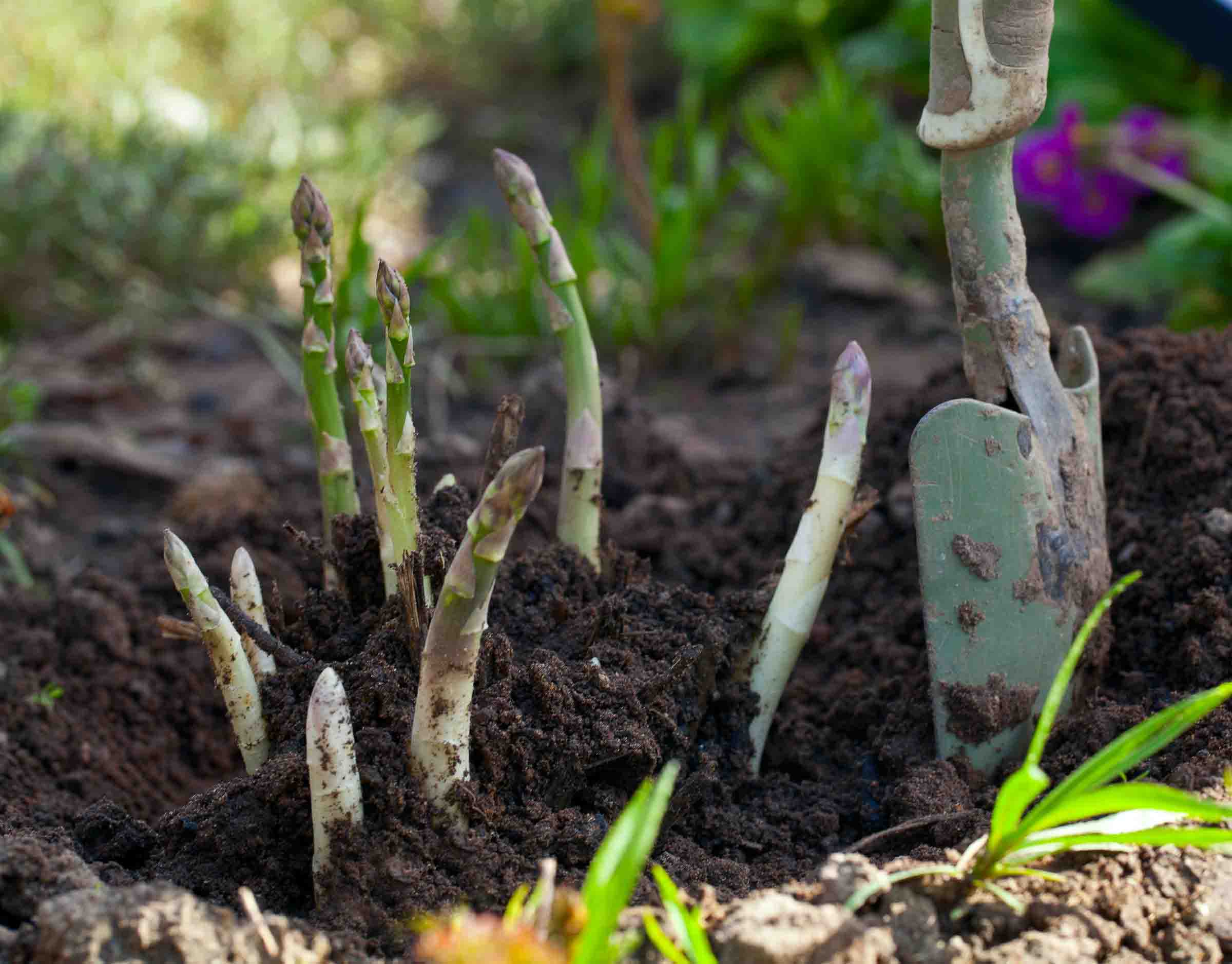
Distribution: Asparagus is a deep-rooted plant. Most of the root groups are distributed within 1~2m, the longest can reach 3m, the lateral distribution radius of roots is 90~120cm, the maximum can reach 1.5~1.9m, and the absorption capacity is strong.
3. Characteristics of asparagus root system: Asparagus stems are divided into underground stems and aboveground stems, each with different functions. Asparagus is a fibrous root system composed of fleshy storage roots and fibrous absorption roots. The fleshy storage roots occur from underground rhizomes, most of which are distributed in the soil layer 30 cm from the surface. They have a long lifespan. As long as they do not damage the growth point, they can extend forward every year, generally up to about 2 meters, to fix plants and store. The role of stems and leaves assimilating nutrients.
Whisker-shaped absorbent roots occur on the fleshy storage roots. The whisker-shaped absorbing roots have a short lifespan, and will shrink at any time under adverse conditions such as high temperature, drought, soil re-salt or acid-base discomfort, excessive moisture, and insufficient air. Asparagus roots are well-developed, extending horizontally in the soil up to about 3 meters, and about 2 meters in depth. But most of the root groups are distributed in the cultivated layer within 30 cm.
Asparagus stem
The tender stems of asparagus are the product organs, and the quantity and quality of the tender stems depend on the quantity and development of bulb buds. The quantity and quality of bulbs depend on the development status of underground stems. The development and growth of bulbs and the formation of tender stems depend on the nutrients accumulated in fleshy roots. However, the amount of nutrients stored by fleshy roots depends on the growth time and the degree of lushness of the shoots and leaves of the previous year. It can be seen that the key to asparagus cultivation is to cultivate lush plants, create good soil and nutrient conditions, promote good root growth, accumulate rich nutrients, and ensure the healthy growth of scale buds.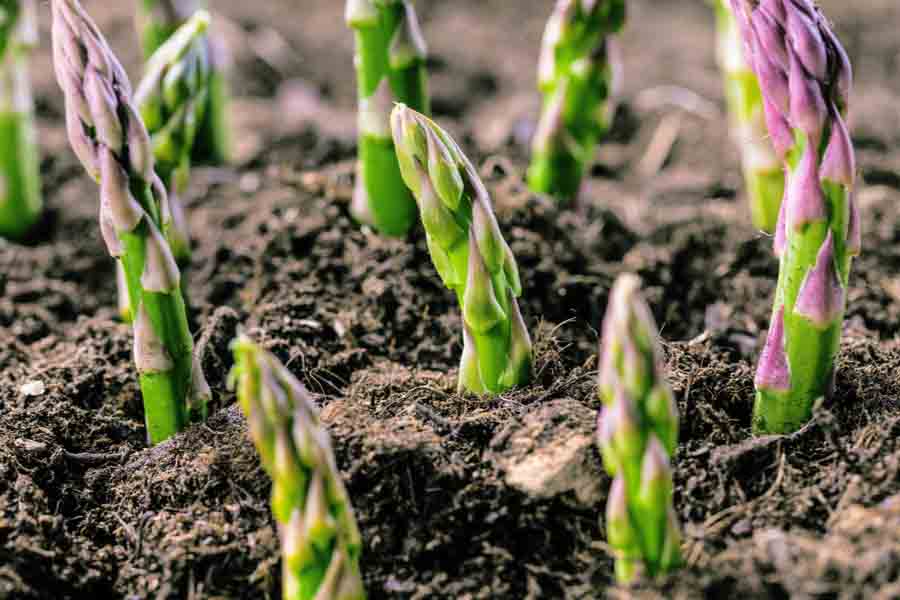
The thickness of asparagus varies with the age, variety, sex, climate, soil and cultivation management conditions of the plant. Generally, young or old plants have thinner stems than adults, and male plants are thinner than female plants. High temperature, insufficient fertilizer and water, weak plants. The stems that are drawn without soil are thinner. The height of the above-ground stems is generally between 1.5 and 2 meters, and the height can reach more than 2 meters. Female plants are mostly taller than male plants, but the number of stems is small and the yield is low. Male plants are shorter, but have more stems and higher yields.
The development and characteristics of underground stems: Underground stems occur at the junction of roots and stems and extend horizontally in the soil. The growth rate is extremely slow (annual growth is 3 to 5 cm), and it becomes an extremely shortened metamorphic stem. The internodes are extremely short, and each node has scale-like abnormal leaves and buds. The buds at the apex of underground stems are densely clustered, called scale bud clusters. These bulbs will germinate into above-ground stems, which are the basic factors of yield composition.

Asparagus leaves
The leaves of asparagus are divided into true leaves and pseudo leaves. The true leaf is a degenerated leaf, which grows on the node of the stem above the ground, and has triangular membrane-like scales. The pseudo-leaf is a kind of abnormal branch, clustered and needle-shaped.Asparagus flowers, fruits, seeds
Asparagus is dioecious, entomophilous, small, bell-shaped, 6 sepals and petals each. Each 1-4 axillary flowers are green and yellow; the peduncle is 8-12 (-14) mm long, and the joints are located on the upper or near middle; male flowers: the perianth is 5-6 mm long; the filaments below the middle are adnate on the perianth. The female flowers of asparagus are smaller and the perianth is about 3 mm long. The berries are 7-8 mm in diameter, red when ripe, with 2-3 seeds. The flowering period of asparagus is from May to June, and the fruit period is from September to October.Asparagus growth habit and growing environment and distribution
Temperature
Asparagus has a strong adaptability to temperature, and it can be cultivated from sub-cold zone to sub-tropical zone. But it is most suitable for temperate cultivation with four distinct seasons and pleasant climate. In the high-cold zone, when the temperature is -33℃ and the frozen soil layer is 1 meter thick, it can still survive the winter safely. Although the output is low, the quality is good. The initial germination temperature of asparagus seeds is 5°C, and the suitable temperature is 25-30°C. If the temperature is higher than 30°C, the germination rate and germination potential will decrease significantly. Propagation with seeds can grow continuously for more than 10 years. The aboveground parts wither in cold winter areas, and the rhizomes and fleshy roots enter the dormant period for overwintering; in warm winter areas, the dormancy period is not obvious.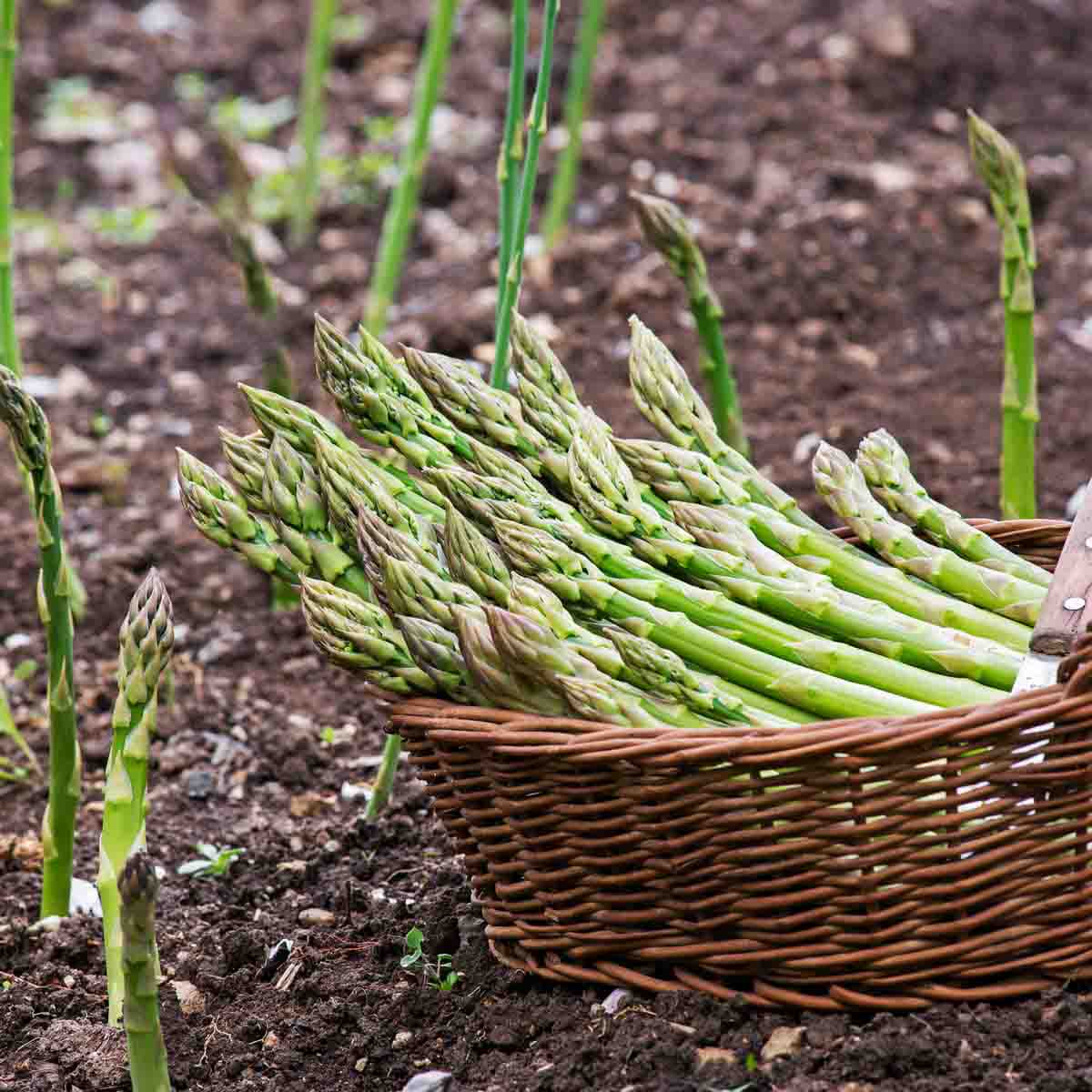
Asparagus sprouts new stems 2 to 3 times or more every year. The tender stems sprouted in spring are generally used for food, and their growth depends on the supply of nutrients stored in the roots the previous year. The growth of tender stems and the formation of yield are positively related to the number of stems formed in the previous year and the degree of luxuriant branches and leaves. As the plant ages, the number of tender stems and yield increase year by year. As the rhizomes continue to branch out, the growth of the plant clusters tends to decline, the above-ground stems become increasingly thin, and the yield and quality of tender stems gradually decline. Generally 4 to 10 years after planting is the abundant production period.
Soil
Asparagus is suitable for sandy loam soil rich in organic matter, and grows well on fertile soil with loose soil, deep soil layer, fertility and water retention, and good air permeability. Asparagus can tolerate mild salt-alkali, but when the soil salt content exceeds 0.2%, the growth of asparagus plants is significantly affected, the absorbing roots shrink, the stems and leaves are weak, and they gradually die. Asparagus has a strong adaptability to the pH of the soil. It can be cultivated in any soil with a pH between 5.5 and 7.8; and the most suitable pH is 6 to 6.7.Moisture
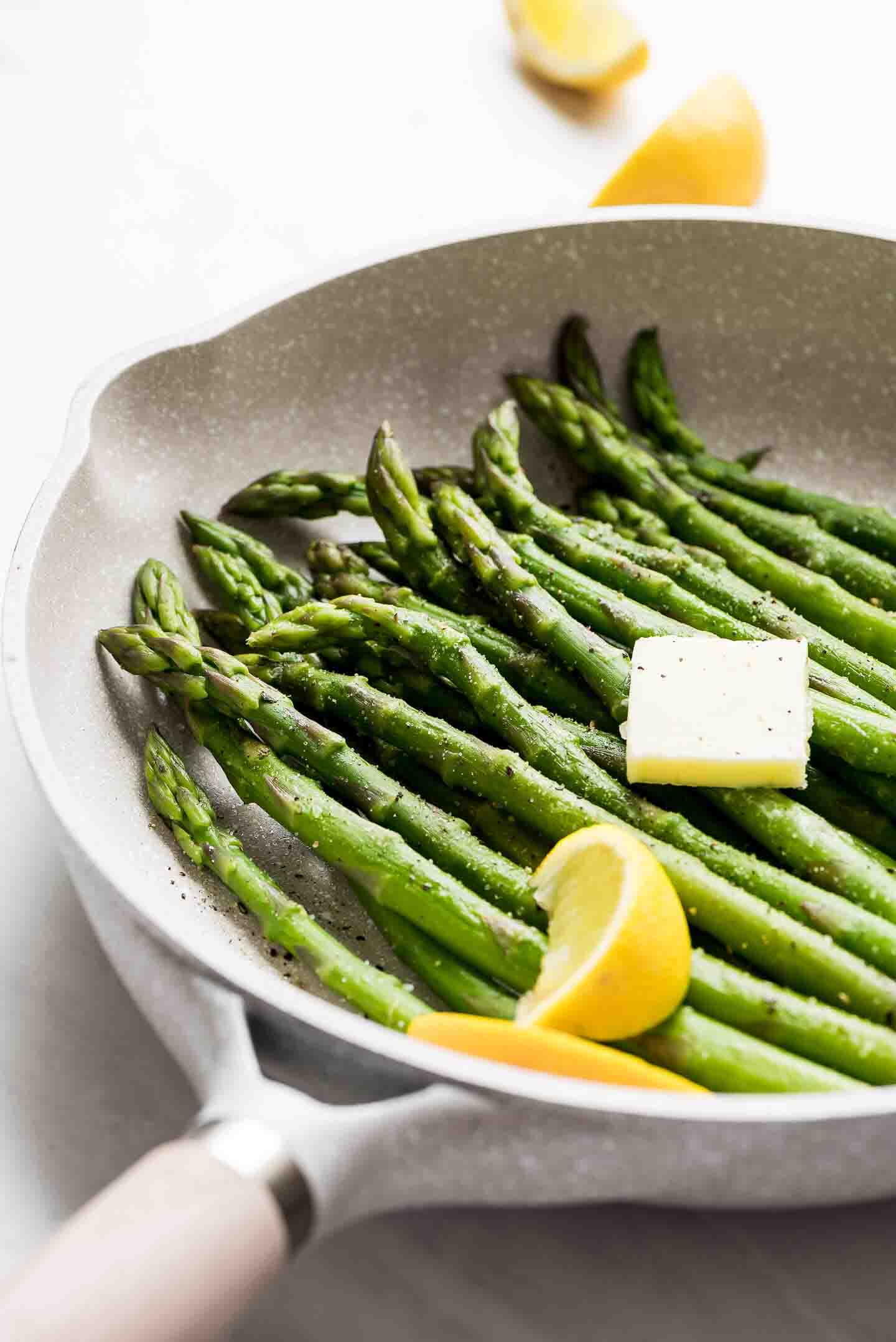
Asparagus efficacy and role
Asparagus is rich in vitamin B, vitamin A, folic acid, selenium, iron, manganese, zinc and other trace elements. Asparagus has various amino acids necessary for the human body.The selenium content of asparagus is higher than that of ordinary vegetables, close to the selenium-rich mushrooms, and even comparable to the selenium content of marine fish and shrimp. In short, from the analysis results of amino acids and zinc, copper, iron, manganese, and selenium in white bamboo shoots and green bamboo shoots, it can be seen that, except that white bamboo shoots contain higher aspartic acid than green bamboo shoots, the content of other amino acids and the aforementioned trace elements is Green bamboo shoots are higher than white bamboo shoots.
Asparagus cultivation
There are two methods of propagation of asparagus: ramet propagation and seed propagation.1. Ramming propagation
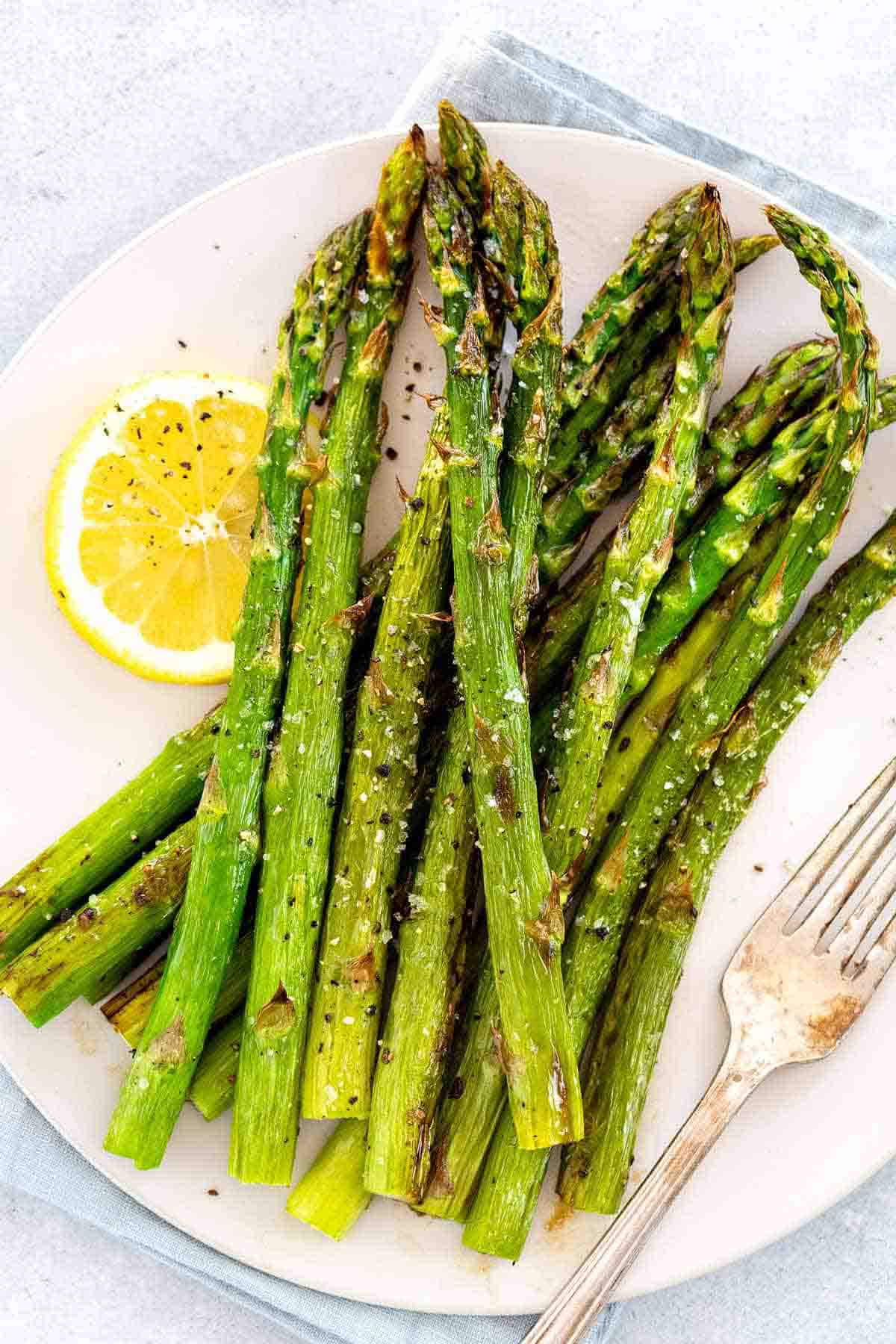
2. Seed propagation
This method is convenient for transportation, has a large reproduction coefficient, strong growth, high yield and long life. In production, this method is often used for reproduction. Seed propagation can be divided into direct seeding and seedling raising.3. Live cultivation
This method has the advantages of strong growth potential of asparagus plants, rapid growth and development of clusters, early orchard formation, early production, and high early-year yield. Asparagus has low seedling rate, large amount of seeds, difficult seedling management, easy breeding of weeds, uneconomical land use, high cost, shallow root distribution, easy lodging of plants, and short economic life. Therefore, it is usually not used in places with a lot of land, a warm climate and a long growth period of asparagus. However, since the 1970s, due to the popularization of mulching technology and herbicides, the problem of low emergence rate of asparagus and weed breeding has been solved, and the application has gradually increased.Latest Updated
- Benefits of Bugleweed - 7 Science-backed Health Benefits
- Bugleweed Dangers & Side Effects - Is It Poisonous?
- How to Plant Evergreen Trees - What You Should Know
- When to Plant Evergreens - Grow Guide for Evergreen Trees
- 12 Wonderful Evergreen Shrubs for Your Garden
- 12 Popular Evergreen Plants with Pictures for Beginners
- When And How To Prune A Lilac Bush Like a Pro
- How to Grow & Care for Lilac Vine (Hardenbergia Violacea)
- Japanese Lilac Tree (Syringa Reticulata) Care & Propagation Guide
- Shumard Oak Pros and Cons - What to Know
Popular Articles
- Winter maintenance of Antirrhinum Majus
- How to Grow Terminalia Mantaly Tree
- How to Grow and Care for Crossostephium Chinense
- How to grow Antirrhinum Majus in spring
- Peristeria Elata (Dove Orchid) Profile: Info & Care Guide
- Underwatered Snake Plant (Sansevieria Trifasciata) - Signs And How To Fix
- How to Care for Brazilian Jasmine Plant (Mandevilla Sanderi)
- How to Grow & Care for Graptopetalum Purple Delight in Summer
- Rosa Chinensis (China Rose): Plant Growing & Care Tips
- How to Care for Baby Sun Rose (Aptenia Cordifolia)